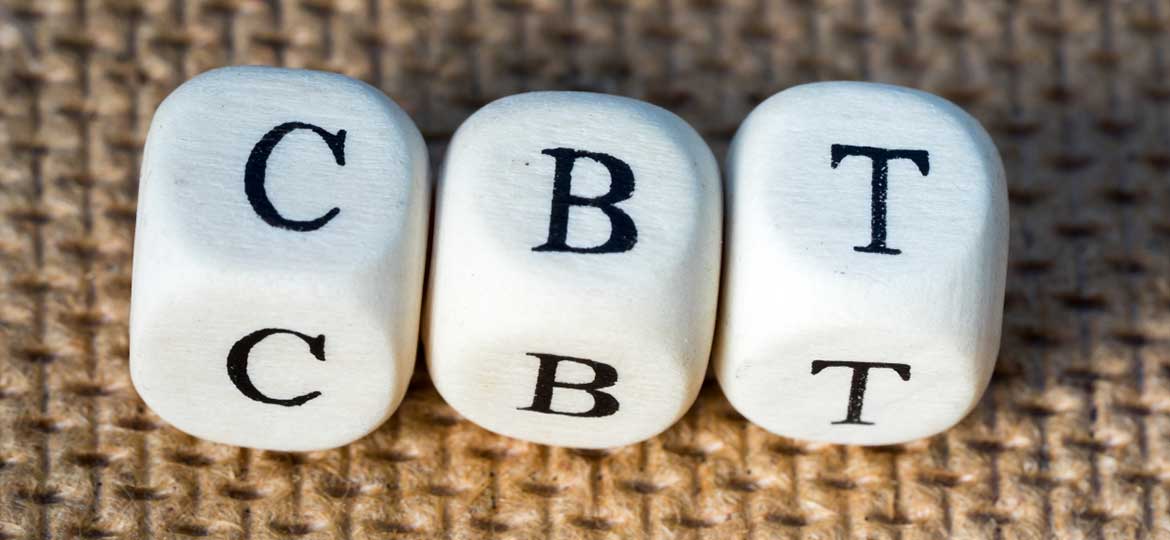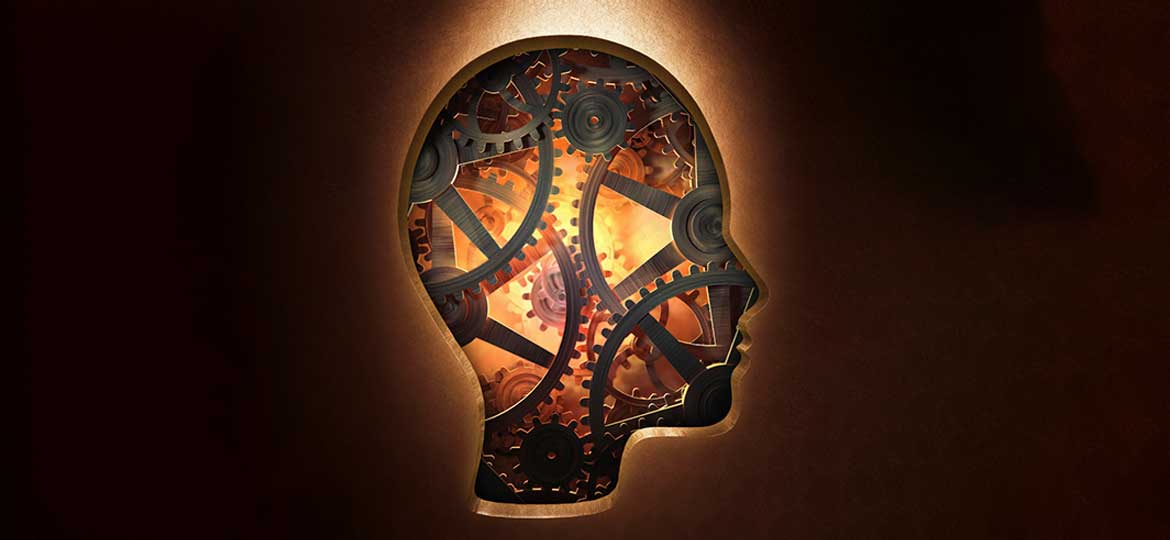*Rate Increase Notice* Starting September 1, 2025 rates for our Psychologists will be increasing to 235$ / 50min session.


All therapists in our Calgary Psychologist Clinic are well versed in CBT. Cognitive Behavioral Therapy (CBT) is a widely recognized and evidence-based form of psychotherapy that focuses on the connection between thoughts, feelings, and behaviors. It is a goal-oriented approach aimed at helping individuals develop effective coping strategies to overcome various mental health challenges. Here is a summary of CBT based on information from the provided websites:
CBT, pioneered by Dr. Aaron T. Beck, is based on the understanding that our thoughts influence our emotions and behaviors. The Beck Institute website highlights that CBT is a collaborative process between the therapist and the individual seeking therapy. It involves identifying and challenging negative or distorted thinking patterns and replacing them with more realistic and adaptive thoughts. This cognitive restructuring helps individuals develop a healthier perspective on their experiences and reduces emotional distress.
CBT operates on the premise that our thoughts, feelings, physical sensations, and behaviors are interconnected and mutually influence one another. The approach emphasizes the importance of breaking negative cycles by modifying unhelpful thoughts and behaviors. Through CBT, individuals learn to identify and challenge unhelpful thinking patterns, such as cognitive distortions or automatic negative thoughts, which can contribute to emotional difficulties.
CBT is grounded in several core principles. Firstly, it recognizes that our interpretations of events, rather than the events themselves, shape our emotional reactions. CBT focuses on helping individuals develop a more balanced and accurate perspective by examining the evidence for and against their thoughts. Secondly, CBT emphasizes that our behaviors are learned and can be modified. By identifying and changing problematic behaviors, individuals can effectively address their difficulties. The principles of CBT also emphasize the role of experimentation and practice. Individuals are encouraged to test the validity of their thoughts and beliefs through behavioral experiments. This process allows them to gather evidence that challenges their negative assumptions, leading to more accurate thinking and improved emotional well-being.
Overall, Cognitive Behavioral Therapy (CBT) is a therapeutic approach that helps individuals understand the connections between their thoughts, feelings, and behaviors. By challenging negative thinking patterns and implementing behavioral changes, individuals can develop more adaptive coping strategies and achieve better mental health outcomes.
Nav Gill
Registered Provisional Psychologist / Clinical Counsellor
English, Punjabi
Murray Molohon
Registered Psychologist
English
Andrea Krygier
Registered Psychologist
English, Spanish
Preeti Rakhra
Registered Provisional Psychologist
English, Hindi
Jarret Verwimp
Clinical Canadian Certified Counsellor
English, French, Spanish (basic)

A detailed review of 269 clinical studies shows how well cognitive behavioral therapy works for many psychological conditions. This is a big deal as it means that CBT matches or surpasses other psychological therapies and psychiatric medications in its results.
CBT ranks among the most well-researched psychotherapy methods out there. It works especially when you have anxiety disorders, depression, and relationship issues. Research consistently reveals major improvements in patients’ functioning and quality of life. Most people need 5 to 20 weekly sessions spread over 3 to 6 months. CBT also works just as well as antidepressants for treating depression, according to recent studies. Patients who complete CBT are less likely to experience depression again.
In this piece, we’ll get into the strong clinical evidence that backs up CBT’s success. You’ll find how this adaptable therapy works in a variety of conditions, along with its treatment protocols and success rates. The therapy has grown to include specialized versions like CBT for insomnia (CBT-I) and improved CBT for eating disorders (CBT-E).
CBT works through a clear approach that brings together cognitive and behavioral methods to help with psychological challenges [1]. The therapy looks at how thoughts, emotions, and behaviors are connected and works on multiple parts of human psychology at the same time.
CBT’s main mechanism works at three distinct levels of cognition [2]:
Core beliefs shaped by early life experiences
Dysfunctional assumptions about life situations
Automatic thoughts that occur in specific contexts
CBT’s foundation comes from the cognitive model. This model suggests psychological problems start from faulty information processing and distorted thinking [3]. These cognitive patterns shape emotional responses and behavioral outcomes directly. The therapy takes a problem-focused approach and deals with current challenges instead of analyzing past events [1].
Systematic exposure and reinforcement processes drive behavioral changes in CBT [4]. The therapy uses well-laid-out methods to help clients build new response patterns when facing challenges. Clients learn to take part in meaningful activities through behavioral activation while reducing avoidance behaviors step by step.
Cognitive restructuring follows a clear process to identify and challenge distorted thinking patterns [5]. Therapists and clients work together to look at evidence supporting and opposing specific thoughts. This helps develop balanced views. The process uses various techniques like Socratic questioning and thought records to help clients assess and change their thinking patterns [6].
Research findings consistently show how effectively cognitive behavioral therapy works for psychological conditions of all types. Meta-analyzes reveal that CBT creates moderate to large effects in treating multiple disorders [7].
Studies show CBT guides patients toward most important improvements in depression symptoms. 43% of patients show at least a 50% reduction in symptoms over 46 months [8]. CBT combined with antidepressants proves more effective than medication alone [9]. Analyzes of 34 reviews that cover 4,673 patients revealed a modest effect size of 0.30. This translates to an average improvement of 4 points on the Beck Anxiety Inventory [7].
Clinical studies support CBT’s efficacy for post-traumatic stress disorder, though outcomes vary by trauma type. Research shows that:
22.2% of cognitive processing therapy patients managed to keep recovery at long-term follow-up [10]
17.5% of prolonged exposure therapy participants showed sustained improvement [10]
Treatment benefits continued despite new traumatic events [10]
CBT has become the life-blood of substance use treatment over the past 20 years. Meta-analyzes show moderate effect sizes (d = 0.45) for substance use disorders of all types [11]. The effectiveness varies by substance type, with:
Largest effects in cannabis treatment
Moderate success rates for cocaine and opioids
Smaller but notable effects on polysubstance dependence [11]
Long-term follow-up studies reveal promising results. 60% of patients show clean toxicology screens at 52-week follow-up [11]. CBT works alone, but research suggests better outcomes happen with combined treatment approaches [12].
Meta-analyzes of clinical studies show CBT works differently for various psychological conditions. Research reveals CBT’s success ranges from 38% for obsessive-compulsive disorder to 82% for body dysmorphic disorder [13].
CBT’s effectiveness varies by a lot depending on the condition type. Research shows post-traumatic stress disorder and generalized anxiety disorder have the highest recovery rates at 53% and 51% respectively [14]. Social anxiety disorder and obsessive-compulsive disorder show lower success rates at 40% and 38% [14].
Research tracking patients over time proves CBT’s lasting impact. The benefits stay strong even 6-12 months after treatment [15]. Combined treatments work better than medication alone, both right after treatment (g=0.51) and in the long run (g=0.32) [16].
These key elements shape how well the treatment works:
Patient Demographics: Older age (OR=1.56) and being female (OR=1.18) associate with higher chances of starting treatment [17]
Clinical Factors: PTSD severity (OR=1.46) and having depression too (OR=1.21) affect how much patients involve in treatment [17]
Success rates differ between outpatient specialty clinics (27.9%) and hospital settings (5.8%) [17]. Patients who take psychiatric medications have lower chances of full recovery [14]. This shows why doctors need to think about many factors when planning treatment.
Decades-old clinical studies show several evidence-based techniques that are the foundations of cognitive behavioral therapy. Therapists use direct observation methods to ensure proper CBT technique implementation. This approach has proven reliable when measuring clinician adherence [18].
Everything in CBT includes:
Cognitive restructuring for thought pattern modification
Behavioral experiments for testing assumptions
Exposure therapy for anxiety management
Progressive relaxation for stress reduction
Mindfulness-based interventions for emotional regulation
Weekly structured sessions allow clinicians to assess symptoms and measure specific target behaviors [19]. Chart-stimulated recall produces higher estimates of CBT implementation (Mean CBT M = 3.18, SD = 0.63) [18]. Therapists introduce systematic monitoring right after treatment begins to track progress toward specific goals.
Consistent monitoring is crucial to measure CBT’s effectiveness through self-reporting or behavioral rehearsal. Routine outcome monitoring guides patients to 2.5 times improvement in symptoms and functioning [20]. Behavioral rehearsal works as well as direct observation, showing non-significant differences in maximum observed CBT scores (M = 4.09, SD = 1.48) [18].
Expertise and reliable infrastructure like recording equipment or observation windows make these techniques work [18]. Treatment effectiveness might vary without proper monitoring. Research shows that effects grow over time, and sustained training and supervision improve therapeutic outcomes [20].
Recent advances in cognitive behavioral therapy show why individual-specific treatment approaches matter. Research proves that treatments designed for specific individuals lead to better patient involvement and adherence [21].
Cognitive behavioral therapy becomes more effective when therapists customize it for each patient. Research reveals that patients who choose their most troubling symptoms stay more involved in treatment [22]. Therapists who create individual-specific approaches see their clients complete more between-session activities [21].
Making cognitive behavioral therapy work for different cultures needs focus on several core elements:
Family involvement and support systems [23]
Religious and spiritual beliefs integration [3]
Somatic conceptualization of emotional issues [3]
Cultural-specific values and traditions [24]
Research shows better outcomes when treatments carefully respect cultural values [3]. Recovery rates among Black and Asian populations grew from 43.8% to 50% between 2015 and 2022 [3].
Making treatments individual-specific requires careful attention to each person’s traits and needs. Research shows that customization can happen through different methods that focus on:
Changes in treatment delivery based on patient priorities show promising results. Studies report better outcomes when treatments match individual needs [23]. Adding culturally-adapted cognitive restructuring techniques works well, especially when dealing with race-related concerns [23].
Individual-specific treatment goes beyond simple changes. It needs a detailed understanding of each patient’s profile, cultural background, and specific therapy needs [24].
Research shows that cognitive behavioral therapy follows specific treatment patterns based on clinical needs and patient responses. Traditional CBT sessions last 30 to 60 minutes weekly over 12 to 20 weeks [25].
Intensive CBT (I-CBT) represents a significant advancement in treatment delivery. It packs therapy into concentrated sessions over shorter periods [25]. We designed this approach specifically for certain conditions, and it shows promising results with fewer patients dropping out [25]. Patients with anxiety-related disorders maintain substantial improvements 12 months after completing their treatment [26].
CBT works best when therapists track progress systematically through:
Weekly mood checks and symptom assessments [4]
Verified rating scales that ensure accurate evaluation [4]
Session-by-session feedback mechanisms [4]
Recent data shows remarkably low relapse rates between 0% and 14% in controlled trials [26]. Maintenance cognitive behavioral therapy reduces relapse risk by 38% [27]. These benefits continue after treatment ends, and studies show lasting improvements in social anxiety symptoms even after 12 months [28].
Therapists adjust treatment length to achieve the best outcomes based on several factors:
Severity of illness
Individual personality traits
Available support systems [29]
Research shows that CBT works better when combined with other treatments. CBT with medication proves more effective than just medication, both in the short term (g=0.51) and long term (g=0.32) [16].
CBT combines smoothly with several proven treatment methods:
Interpersonal therapy for relationship issues
Antidepressant medications for depression
Motivational interviewing for addiction treatment
Psychodynamic therapy for anxiety disorders
Adding CBT to antidepressant treatment improves depression scores and lowers the chance of symptoms returning over 1-2 years [30].
Clinical evidence backs up the power of sequential treatment methods. Adding CBT after medication fails leads to remission rates of 40% [30]. Patients who show some response to their original treatment do even better, with 61% achieving remission when CBT joins their medication plan [30].
A patient’s treatment plan must account for many factors that affect success. Research reveals that anxiety levels predict non-remission rates by a lot in combined treatments [30]. Studies of substance use disorders point to best results when treatments use both medication and CBT [31].
The treatment combination process needs to focus on:
Each patient’s unique needs
Treatment sequence timing
Response monitoring protocols
Maintenance strategies
Clinical data confirms that behavioral and drug treatments together work best for conditions of all types [31]. This combined approach helps manage symptoms through multiple healing pathways.
CBT implementation in real-life settings creates unique challenges that affect treatment delivery and outcomes. Only 20% of child and adolescent mental health practitioners use CBT as their primary therapeutic approach [32].
The implementation process needs systematic changes to tackle practical challenges. Providers working with anxious youth clients show CBT adherence rates between 5% and 100% [32]. These strategies help make implementation successful:
Family participation based on cultural considerations
Flexible protocol implementation
Simple solutions for exposure tasks
Solutions for environmental factors affecting treatment
Research shows that continuous support is vital to improve adoption of evidence-based practices [32]. Organizations need to find the right balance between following protocols and dealing with practical constraints.
Research shows cognitive behavioral therapy works well to treat many psychological conditions. Studies show impressive success rates between 38% and 82%. These numbers are especially good for people with anxiety disorders and depression. CBT works just as well as traditional psychiatric medications and patients are less likely to relapse.
CBT’s flexibility makes it powerful. Therapists can tailor it to each person’s needs, cultural background, and combine it with other treatments. Most people need 12 to 20 weeks of therapy, though shorter intensive programs can help with specific conditions. The largest longitudinal study shows the benefits last, and using maintenance strategies cuts relapse risk by 38%.
Ground application comes with its challenges. Well-laid-out quality assurance methods and smart adaptations help keep treatment working well. Regular monitoring and feedback systems are the foundations of getting the best results. CBT proves its worth as the life-blood of modern psychological treatment by carefully addressing each person’s needs, cultural background, and practical limits.
Strong evidence makes CBT a leading therapy choice that measurably improves patients’ daily functioning and quality of life. More research and better implementation strategies will make it even more effective in a variety of populations and treatment settings.
Q1. How effective is Cognitive Behavioral Therapy (CBT) according to clinical studies? Clinical studies show that CBT is highly effective, with success rates ranging from 38% to 82% across various psychological conditions. It has proven particularly effective for anxiety disorders and depression, with outcomes matching or exceeding those of traditional psychiatric medications.
Q2. What are the core principles of Cognitive Behavioral Therapy? CBT operates on three levels of cognition: core beliefs, dysfunctional assumptions, and automatic thoughts. It focuses on examining the connections between thoughts, emotions, and behaviors, using a problem-oriented approach to address current challenges rather than historical analysis.
Q3. How long does a typical course of Cognitive Behavioral Therapy last? A typical course of CBT spans 12 to 20 weeks, with weekly sessions lasting 30 to 60 minutes. However, treatment duration can be customized based on the severity of the condition, individual personality traits, and available support systems.
Q4. Can Cognitive Behavioral Therapy be combined with other treatments? Yes, CBT can be effectively combined with other treatments. Studies show that integrating CBT with pharmacotherapy, interpersonal therapy, or motivational interviewing can enhance therapeutic outcomes for various conditions, including depression and addiction.
Q5. How is Cognitive Behavioral Therapy personalized for individual patients? CBT is personalized by adapting interventions to patient-specific needs, considering cultural factors, and customizing treatment strategies. This may include focusing on the most burdensome symptoms, integrating cultural values and beliefs, and modifying treatment delivery based on individual preferences and characteristics.
[1] – https://www.ncbi.nlm.nih.gov/books/NBK279297/
[2] – https://www.pcom.edu/academics/programs-and-degrees/mental-health-counseling/news/understanding-cbt.html
[3] – https://pmc.ncbi.nlm.nih.gov/articles/PMC9850872/
[4] – https://beckinstitute.org/blog/monitoring-progress-and-patient-outcomes/
[5] – https://www.healthline.com/health/cognitive-restructuring
[6] – https://www.therapistaid.com/therapy-guide/cognitive-restructuring
[7] – https://pmc.ncbi.nlm.nih.gov/articles/PMC7856415/
[8] – https://www.psych.ox.ac.uk/news/study-finds-cbt-offers-long-term-benefits-for-people-with-depression
[9] – https://www.webmd.com/depression/cognitive-behavioral-therapy-for-depression
[10] – https://pmc.ncbi.nlm.nih.gov/articles/PMC3336190/
[11] – https://pmc.ncbi.nlm.nih.gov/articles/PMC2897895/
[12] – https://pmc.ncbi.nlm.nih.gov/articles/PMC9948631/
[13] – https://pmc.ncbi.nlm.nih.gov/articles/PMC3584580/
[14] – https://div12.org/cognitive-behavioral-therapy-outcomes-in-anxiety-were-halfway-there/
[15] – https://onlinelibrary.wiley.com/doi/10.1002/wps.21069
[16] – https://pmc.ncbi.nlm.nih.gov/articles/PMC9840507/
[17] – https://pmc.ncbi.nlm.nih.gov/articles/PMC6702958/
[18] – https://pmc.ncbi.nlm.nih.gov/articles/PMC9680992/
[19] – https://beckinstitute.org/blog/how-to-know-if-therapy-is-working/
[20] – https://feelinggoodinstitute.com/blog/measurement-matters-in-effective-cognitive-behavioral-therapy-research-brief
[21] – https://www.sciencedirect.com/science/article/pii/S1071581924001034
[22] – https://pmc.ncbi.nlm.nih.gov/articles/PMC8507219/
[23] – https://www.counseling.org/publications/counseling-today-magazine/article-archive/article/legacy/adapting-cbt-to-meet-clients-needs
[24] – https://www.apa.org/pubs/books/Culturally-Response-Cognitive-Behavioral-Therapy-Second-Edition-Intro-Sample.pdf
[25] – https://www.health.harvard.edu/blog/intensive-cbt-how-fast-can-i-get-better-2018102315110
[26] – https://pmc.ncbi.nlm.nih.gov/articles/PMC6902232/
[27] – https://psychiatryonline.org/doi/10.1176/appi.ajp.2013.12060734
[28] – https://www.sciencedirect.com/science/article/abs/pii/S088761852200113X
[29] – https://beckinstitute.org/blog/determining-treatment-length-in-cbt/
[30] – https://psychiatryonline.org/doi/10.1176/appi.ajp.2018.18091075
[31] – https://pmc.ncbi.nlm.nih.gov/articles/PMC7305524/
[32] – https://pmc.ncbi.nlm.nih.gov/articles/PMC4869696/
[33] – https://pmc.ncbi.nlm.nih.gov/articles/PMC6129437/
[34] – https://bmchealthservres.biomedcentral.com/articles/10.1186/s12913-022-08519-9
An unbiased perspective can be extremely effective in helping us to shift our focus to a place where we can make a positive change in our lives. Call or Text for a Free Consultation
Our Calgary Psychologist Clinic works with the best Psychologists and Counsellors to meet your needs. Our therapists are proficient in a range of theoretical frameworks and each have their unique strengths. We all believe in building therapeutic relationships based on respect and trust and put the well being of our clients first and foremost. We are here to help you succeed in achieving your therapeutic goals so that, when you are ready, can move beyond therapy and face your life’s challenges with more optimism and clarity. Whether you are facing depression, anxiety, grief, trauma, family issues, anger or something else, we will do our absolute best to help you!
In our Calgary counselling clinic, we help with many mental health problems. Our therapists can assist with a range of issues. These include grief, trauma, anxiety, depression, parenting challenges, PTSD, eating disorders, postpartum depression, fears and phobias, ADHD, self-esteem issues, relationship difficulties, OCD and many more.
No matter what you’re dealing with, our therapists are here to provide evidence-based therapy that fits your needs. We want to help you overcome challenges, build resilience, and find more happiness and fulfillment in your life.




















We all have some luggage but that doesn’t mean that we have to carry it around for the rest of our lives.
Complete the Contact Form or Call or Text for a Free Consultation
Our Calgary Psychologists and therapists offer counselling and formal psychological assessment services for individuals, couples, and families. We tailor these services to meet the unique needs of each client. Our goal is to support our clients in achieving their personal and relational goals.
We help families improve communication and solve problems. We also offer assessments for learning disabilities and ADHD. Our support extends to various mental health issues. Our support covers many mental health issues.
Our therapists dedicate themselves to providing a safe and supportive environment for clients of all ages and backgrounds. They help clients explore their thoughts, feelings, and experiences. The team is committed to creating a space where clients can feel comfortable and understood. They strive to help clients on their journey towards healing and growth.
We are here to help with individual therapy, couples counseling, or support for your child, teen or family. We offer counseling services in person and virtually. This makes it convenient and flexible for our clients to access our services. Whatever challenges you may be facing, we are committed to guiding you towards healing, growth, and greater well-being.

























Finding a Psychologist or Counsellor that can help you clear your mind and find more inner peace doesn't have to be difficult. Because the therapeutic relationship is so important, we offer a Free Consult. Text or Call Today and get yours!